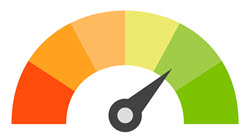The basics of Consumer Loans
HOW Consumer LOANS WORK
Need money to pay for something big, like a car? You may need a consumer loan. Let’s look at how these loans work.
The lender may also charge you fees for giving you the loan. On top of repaying the principal, you’ll also have to pay the lender interest.
How much interest you’ll pay for your loan depends on three main factors: how much you’re borrowing, the interest rate, and how long it will take you to pay the money back, also called the term of the loan.

COMPARE INTEREST RATES of consumer loans
Compare two sample consumer loans. Note how the interest rate affects the total amount of interest paid.
Interest rate comparison
Loan amount of $10,000 with a 5-year term
| About the Loan | Loan A | Loan B |
|---|---|---|
| Interest rate | 5% | 15% |
| Monthly payment | $188.77* | $237.90* |
| Total interest over 5 years | $1,236.92 | $4,271.08 |
As for the interest rate, it’s important to shop around. Some lenders may give you a lower rate than others. In general, the shorter the term, the lower the total interest paid.
By getting a 5% interest rate vs. 15%, this borrower would save over $3,000 interest over five years!
Note: Always try to get a loan with the lowest interest rate you can. Remember: a strong credit score may help you qualify for a lower interest rate.
TRY IT OUT
Use the calculator below to figure out the details of a loan. This will help you get used to the term length and how much an interest rate on the loan can affect your monthly payment.
co-signing a consumer loan
A co-signer (also known as a co-borrower) is someone who assumes equal liability with the primary borrower for the repayment of a loan. If you’re considering co-signing a loan, consider the following:
In some cases, co-signed loans that go into default, as many as three out of four co-signers are asked to repay the loan. If you’re asked to co-sign, you’re being asked to take a risk that a professional lender won’t take. Remember that if the borrower met the loan criteria, the lender wouldn’t require a co-signer.
In most states, if you co-sign and your friend or relative misses a payment, the lender can immediately collect from you. Also, the lender could decide to sue to collect. If they win the case, your wages and property may be taken.
Despite the risks, there may be times when you want to co-sign. Your child may need a first loan, or a close friend may need help. Before you co-sign, consider this information:
- Be sure you can afford to pay the loan. If you’re asked to pay and can’t, you could lose property, be sued or your credit rating could be damaged.
- Even if you’re not asked to repay the debt, your liability for the loan may keep you from getting other credit because creditors will consider the cosigned loan as one of your obligations.
- Ask the lender to calculate the amount of money you might owe. The lender isn’t required to do this but may if asked. You also may be able to negotiate the specific terms of your obligation.
- Ask the lender to agree, in writing, to notify you if the borrower misses a payment. That will give you time to deal with the problem or make back payments without having to repay the entire amount immediately.
- Make sure you get copies of all paperwork, such as the loan contract, the Truth-in-Lending Disclosure Statement, and warranties—if you’re cosigning for a purchase. You may need these documents if there’s a dispute between the borrower and the seller. The lender is not required to give you these papers; you may have to get copies from the borrower.
- Check your state law for additional co-signer rights.

credit application checklist
PREDATORY LENDING – YOU COULD BE AT RISK

Who’s at higher risk of predatory lending? Anyone can be a victim of predatory lending, but for a variety of reasons some people are at especially high risk:
- People with substantial equity in their homes and low or fixed incomes
- Older adults with substantial equity in their homes
- People with limited knowledge about finance
- People with limited English skills
- People with limited financial access and experience
- Minorities and immigrants
For more information about predatory lending and learning about potential warning signs, visit the Selecting a Lender resource.
if the lender says no
There can be many reasons a loan may not be approved. There are 7 steps you can take to have the lender reconsider.
| Reasons a loan may not be granted | Steps you can take to have the lender reconsider |
|---|---|
| 1. Irregular employment or limited job history 2. Not enough income to repay the loan 3. Poor credit history (slow repayment of other loans) 4. Lack of credit history 5. Too short a time at residence 6. Insufficient down payment 7. Insufficient documentation 8. Application mistakes 9. Too much outstanding credit or loan debt 10. Too many (new) accounts or recently closed accounts | 1. No prior credit? Apply for a credit card with a low limit and make small purchases / pay on time. 2. Find out if all sources of income were considered in evaluating your loan application. 3. Pay off some of your existing debt. 4. Find a reliable co-signer for the loan. 5. Offer to make a larger down payment if possible. 6. No credit history? Find out if things like rent payment or utility bills could be considered. These factors are called non-traditional forms of credit. 7. Look for errors in the information the credit bureau provided to the lender. |

